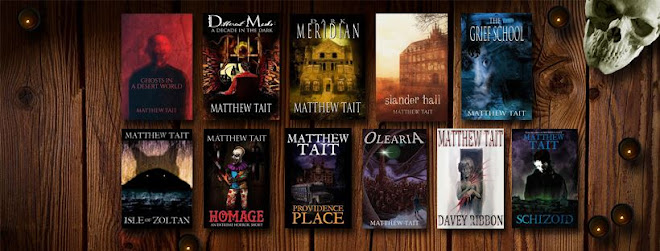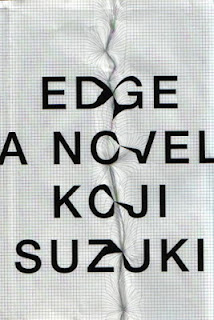A series of questions that has been doing the rounds lately:
What
is the working title of your next book?
The working title, and the one that I imagine will
stick, is called DAVEY RIBBON.
Where
did the idea of the book come from?
Years ago (I think this may have been as far back as
2006), my younger brother and I decided on a brainstorming session for a collaborative
effort of dark fiction. We are both cut from similar creative cloth (he a
talented illustrator), with myself applying a life-long fixation with the
horror genre into the Australian horror community by writing for HorrorScope. It
was a session that didn't last long ... but he provided me with a few
illustrations that would eventually germinate into what would become DAVEY
RIBBON. Mainly, this was my ambitious attempt to pay homage to the stories I
grew up with featuring small town mythos. I had already pursued the world-building path with the broader arc of a story called OLEARIA. Now it was time
to scale down the canvas - to use a modern American town and its populace as a cauldron on the cusp of Hell. The trick here was sculpting a worthy antagonist - creating a fiend that was almost child-like in its sense of manipulating human beings.
What
genre does your book fall under?
I think the story is probably too subtle for HORROR.
Let’s just stick with dark fiction.
What
actors would you choose to play the part in a movie rendition?
I wouldn’t want to give away the title character with an image...
or any others for that matter. The beauty of the written word is that it
creates a lens that is entirely at the discretion of the reader. If you had
gone to see The Shining before actually reading the book, chances are you would
see nobody else but Jack Nicholson’s face strutting around on those pages. For me,
that’s utterly limiting.
That said, I could easily imagine Timothy Hutton
playing Sean Hunt - and perhaps a younger Max Von Sydow playing Norman Perks. If she was
at all interested I’d let Amy Lee of Evanescence play Samara Reagan.
What
is the one sentence synopsis of your book?
The story of Davey Ribbon was told in reverential
whispers.
Will
your book be self-published or represented by an agency?
Although I’m a big advocate for self publishing, I
think this one deserves to have a broader audience. So with that in mind I’ll
be seeking a traditional publisher.
How
long did it take you to write the first draft of the manuscript?
Although the story isn’t overly ambitious this was
years in the making because I kept putting it aside for months at a time. It
was only on the advice of someone very dear to me that I decided to go ahead
and finish the story.
What
other books would you compare this to with stories in your genre?
The initial seeds were probably planted with King’s Needful Things. But after that it has
kind of morphed into more of a ghost story along the lines of the movie Darkness Falls.
Who
or what inspired you to write this book?
No one thing, really. Just that it was time to try
and dig something big out of the sand.
What
else about the book might pique a reader’s interest?
For those people who have read and enjoyed my
shorter works, this is Matthew Tait shifting gears and moving up a notch.
Although a lot of the story here can be classified as homage, there is also a
lot of recognizable heart from my own life - something that I try to instil
in everything I write. It’s the old adage of simple revenge – but it also how
myths and legends are told through reverential whispers ... and how they are
manipulated over time to be given a form of life itself.
And one last thing ... if it had a soundtrack it
would be something composed by Christopher Young.
Passing the baton onto Troy Barnes, Paul Mannering and Brad Hodges.

















